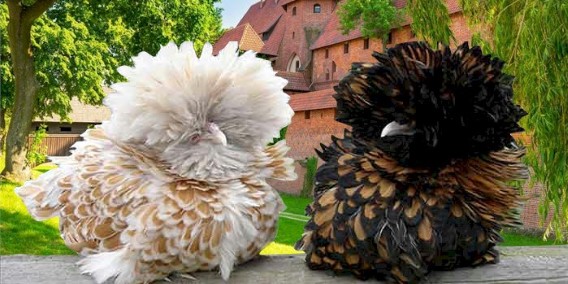Polish (also known as Padovana of Chili or Polish Frizzles), chickens have a huge
bouffant crest of feathers and a v-shaped comb.
Though the derivation of
the Polish breed is unclear, one theory suggests that their ancestors were
brought by Asian Mongols to Eastern Europe during medieval times, and thus,
could have originated in Poland. It is also believed that immigrants could have
brought the breed's predecessors from Spain or Italy in the late 16th century.
The Polish was standardized in the Netherlands and declared a thoroughbred in
the 16th century. Chickens bearing a strong resemblance to the Polish can be
seen in paintings from the 15th century, and they were extensively portrayed in
Dutch and Italian paintings from the 16th through the 18th centuries.
Though usually only a
fair layer at best today, In France they were once known as an excellent
producer of eggs. The American Poultry Association states that they were introduced
to America between 1830 and 1840. They were, during a certain period of time,
favored by American farmers and chicken fanciers. The American Poultry
Association accepted three Polish varieties into the American Poultry
Association’s Standard of Perfection in 1874; additional varieties were accepted
in 1883, 1938 and 1963.
They are tame but their
behavior can be a bit wacky since their crest limits their vision. When in a
flock with more aggressive breeds, Polish will tend to be on the low end of the
pecking order. Egg laying is varied in this breed - some lay well and some very
poorly. In short, Polish are sweet, beautiful exhibition birds and
can be good layers in the backyard flock, but they're
not reliable.

